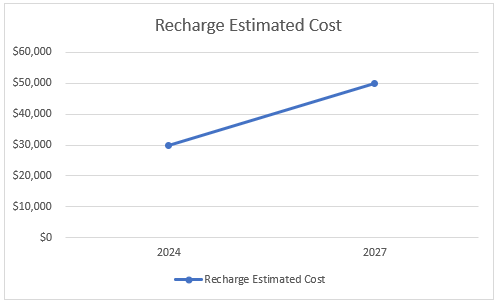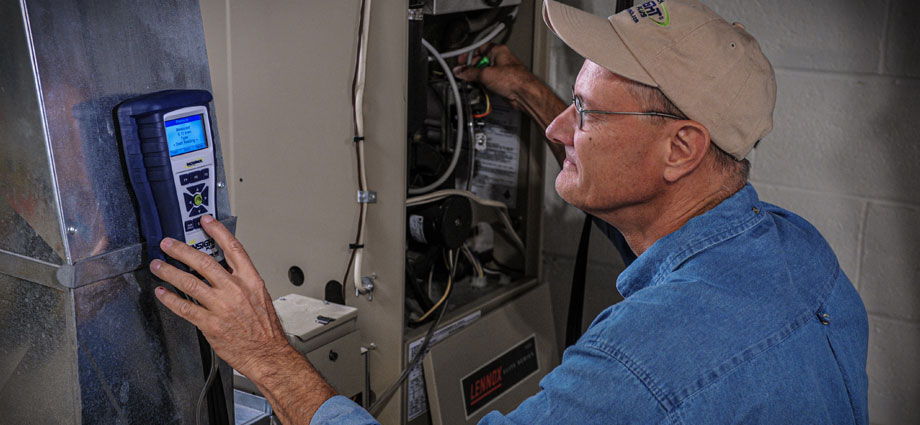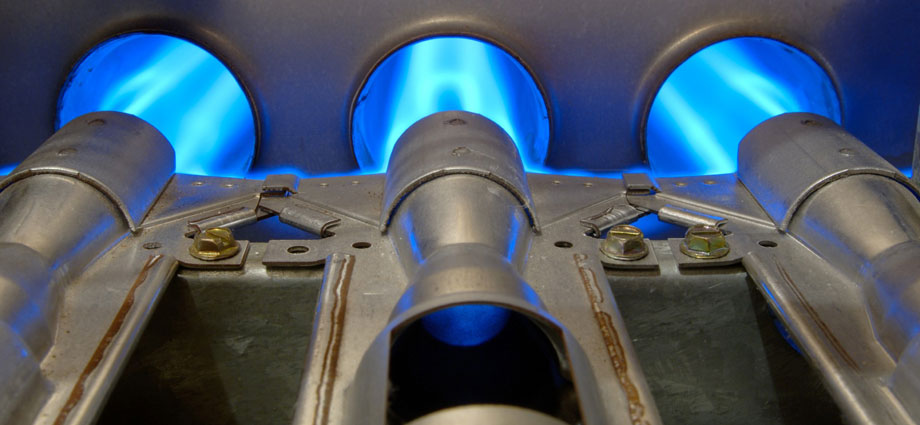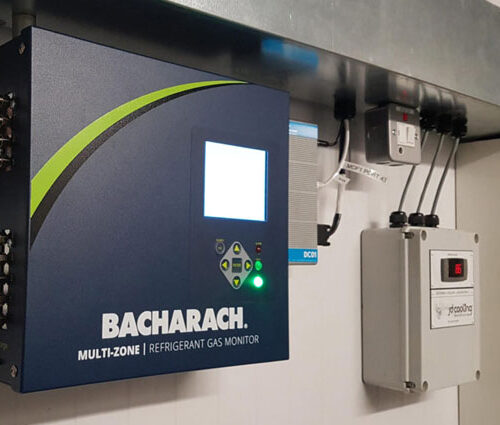
‘Tis the season for hot weather and the hum of air conditioners throughout our neighborhoods. But temperatures aren’t the only thing heating up; refrigerant gas prices are also rising. As those air conditioner fans blow hard and those condensers are put to work, issues including refrigerant leaks can and will happen. Being proactive about refrigerant leak detection, using portable gas leak detectors, is an easy way to help save your customers money.
Why are refrigerant gas prices rising?
Much of the globe is moving toward aligning with the Kigali Amendment of the Montreal Protocol, an international agreement aiming to reduce hydrofluorocarbon (HFC) emissions and their environmental impact. According to the Environmental Protection Agency (EPA), hydrofluorocarbons are a type of man-made fluorinated gas that has a very high global warming potential (GWP). The use of hydrofluorocarbon gas has been trending upward in recent decades as a popular substitute for ozone-depleting substances (ODS). The use of ODSs was phased down until they were ultimately banned, helping increase the usage of HFCs.
Today, HFC gases are in the process of being phased out, like the now-banned ozone-depleting substances of the past. The American Innovation and Manufacturing Act (AIM Act) was signed into law in the U.S. on December 27, 2020. Seeking to reduce the production and usage of HFCs, the AIM Act gives the EPA the authority to phase out a large percentage of HFC usage in the United States by 2036. At the start of 2024, one of the required HFC production reductions took effect. That reduction lowers the available amount of common refrigerants like R-134a, R-404A, and R-410A. The reduction in supply is causing prices to rise. As additional reductions in permissible HFC production are implemented and further usage restrictions take effect, prices for HFC refrigerant gases are expected to continue climbing.
HFCs are commonly used as the primary refrigerants in modern refrigeration and air conditioning applications. Research has shown that these gases are not easily removed from the atmosphere. The EPA notes that many fluorinated gases remain in the atmosphere until they break down in the upper atmosphere due to sunlight exposure. Their long life, combined with high GWP, makes fluorinated gases among the most potent greenhouse gases released into the atmosphere by human activities. It is for this reason that HFCs are being phased out.
The value of using portable leak detectors for refrigerant leak detection and how early leak detection can save customers money
There are three key reasons to be vigilant in helping customers detect refrigerant leaks early: cost savings on what will be increasingly more expensive recharges, aligning with environmental goals and regulations, and compliance with safety standards and mandates.
1. Cost Savings
Catching and repairing leaks early can save customers money on recharges. As requirements of the AIM Act are implemented, supply of HFC refrigerants will drop. Consider the common refrigerant gas, R-404A. As supply drops, MSA estimates the cost of R-404A refrigerant will increase 10% to 30% by 2027. This means increasing costs to consumers to recharge systems utilizing R-404A refrigerant gas.

By MSA estimations, based on annual leak rates of grocery stores, a $30k system recharge today could jump to as much as $50k to $100K by 2027.
Further, a well-charged system functions more efficiently. This results in lower energy consumption and better cooling function of the conditioning system. Portable leak detectors can help technicians examine hard-to-reach areas for small leaks, helping catch an issue at the first sign and allowing corrective action to be implemented before the issue reaches catastrophic levels.
2. Environmental Factors
Refrigerant leaks are harmful to the environment . Impacts from leaked fluorinated gases in a system today are likely to have environmental impacts for decades. The EPA uses global warming potential as a unit of measurement intended to compare the holistic global warming effect of different greenhouse gases. The unit of measure is derived by comparing the warming effects of a greenhouse gas with carbon dioxide (CO2). The measurement examines how much energy would be absorbed over a period of time by the release of 1 ton of any gas into the atmosphere compared to 1 ton of CO2 gas. Because carbon dioxide is the reference gas, it has a global warming potential of 1. According to the EPA, fluorinated gases can have GWPs in the thousands to tens of thousands. For hydrofluorocarbon gas, the EPA lists the global warming potential as up to 12,400 over 100 years, with a potential lifetime in the atmosphere of up to 270 years.
3. Safety Compliance
Regulations regarding refrigerant usage and emissions are becoming increasingly stringent. Further, leaks of refrigerant gases, especially in confined indoor spaces, can be harmful to human health. Regulations exist not only to mitigate harm to the environment but also aim to prevent humans from being exposed to potentially harmful gases. Portable leak detectors help businesses comply with these regulations by identifying and addressing leaks before they escalate into significant issues. Failure to comply can result in costly fines and work stoppages.
Not only do these leaks potentially cause damage to the environment, but they can also be costly. Failure to adhere to environmental regulations can result in costly fines. Using portable leak detection solutions to proactively locate and quickly repair leaks can help customers remain compliant and avoid fines.
MSA Safety can help you save your customers money with portable leak detection solutions
Portable refrigerant leak detectors can play a crucial role in maintaining the integrity, efficiency, and safety of refrigeration systems, making them indispensable tools for businesses and technicians operating in industries where refrigerants are used. Using these leak detectors enables technicians to quickly and accurately locate leaks, helping reduce the time and effort required for troubleshooting and repair. This can help increase the efficiency of maintenance operations and can help with minimizing downtime while maximizing system performance. MSA Safety portable leak detection solutions include the MSA Bacharach H-10 PRO Refrigerant Leak Detector and the MSA Bacharach Informant® 2 Multi-purpose Leak Detector.
1. MSA Bacharach H-10 PRO Refrigerant Leak Detector
Designed to detect refrigerant leaks, the MSA Bacharach H-10 Pro Refrigerant Leak Detector is capable of detecting 65 different refrigerants. Using heated diode technology, the ultra-sensitive detector can be used for all halogen-based, non-flammable CFC, HFC and HCFC refrigerants.
The H-10 PRO has a long, 4.5-foot probe to help find leaks in hard-to-reach areas. The unit will give both visual and audible alerts based on the magnitude of a leak and it has an auto-zeroing feature to help find leaks in environments where the target gas is present. The system functions uninterrupted when plugged into a wall and also has a battery mode for when wall power isn’t an option.
Learn more and see the product specs and list of detectable gases!
2. MSA Bacharach Informant® 2 Multi-purpose Leak Detector
The MSA Bacharach Informant® 2 Multi-purpose Leak Detector is designed for residential and commercial heating and cooling contractors. The multi-purpose, handheld leak detector is for both refrigerant and combustible gases. Capable of detecting almost 80 different gases, the flexible sensor contained within the Informant 2 leak detector can be switched from detecting combustibles to refrigerant gases in seconds.
The Informant 2 leak detector has a flexible end to help with detection in hard-to-reach areas and has dual LED scales to display and help you gauge the magnitude of any detected leaks. The detector also has audible indicators to alert the user to detected leaks and has an auto-zeroing feature for use in environments where the target gas is present.
Learn more and see the product specs and list of detectable gases!
Visit our HVAC-R Market Page to learn about all our Refrigerant Leak Detection solutions.

Explore MSA Refrigerant Leak Detection Solutions
Explore Solutions






